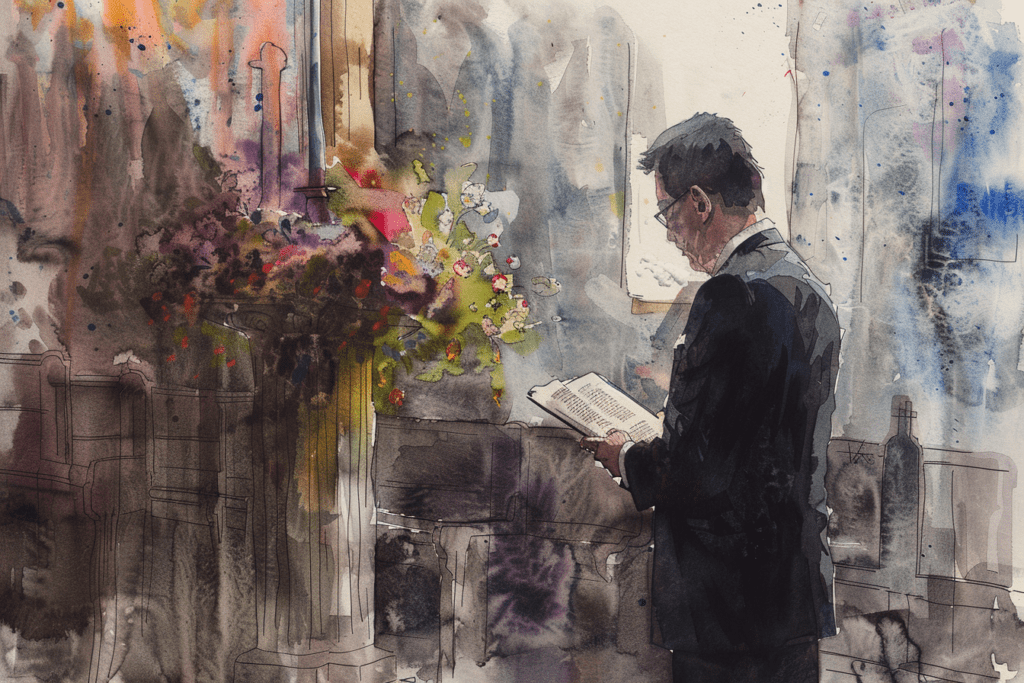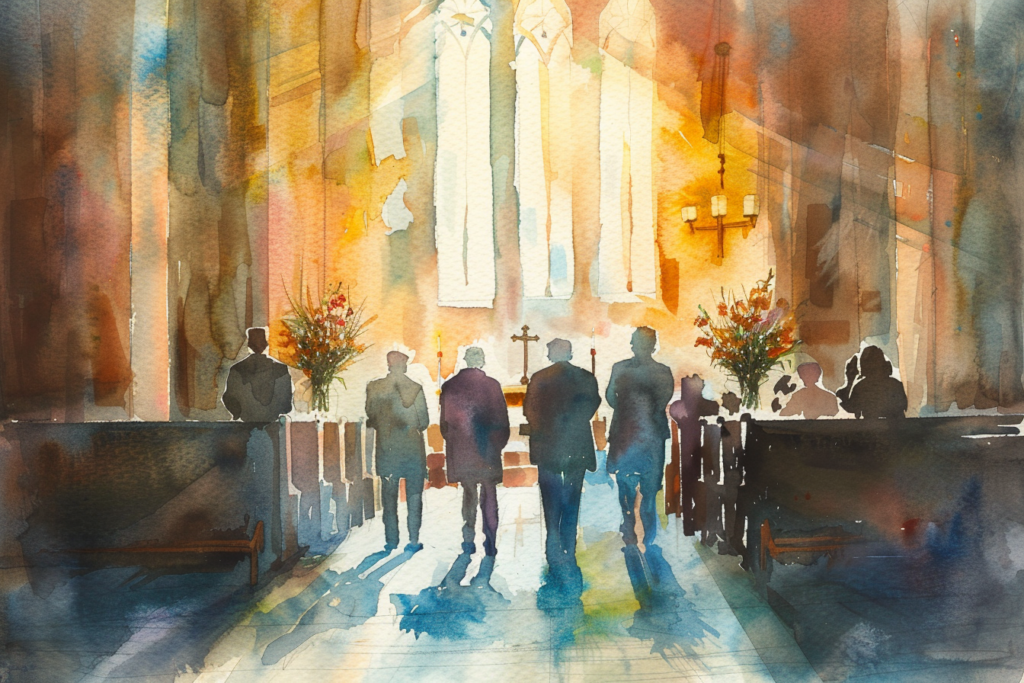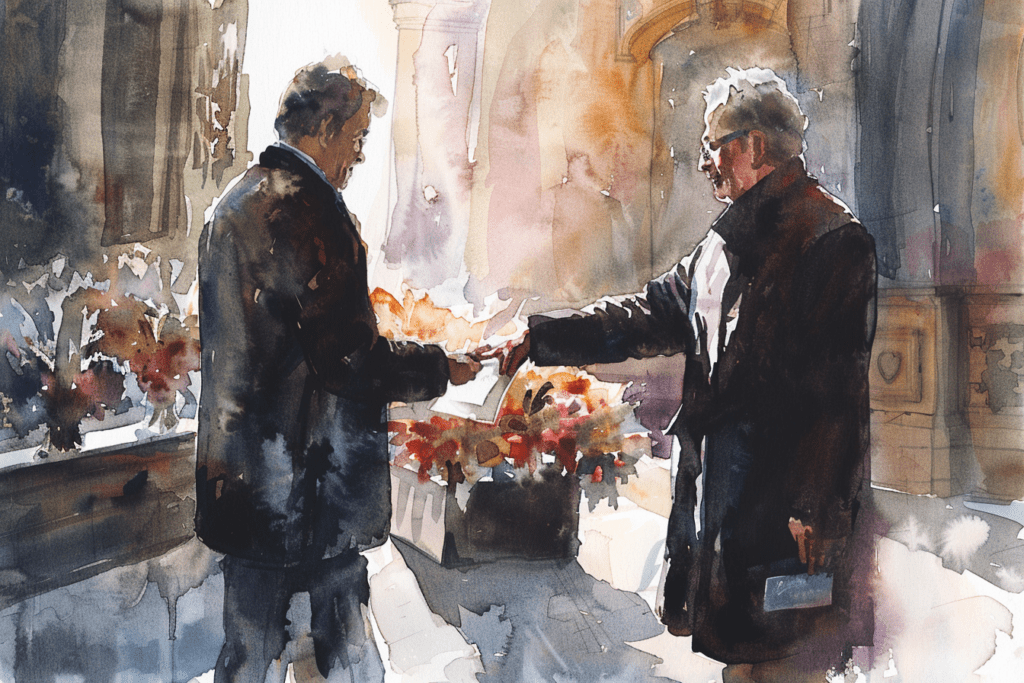
Incorporating Technology In A Funeral Order Of Service Booklet: QR Codes and Interactive Elements



Introduction

Funerals are profound occasions, marked by reflection, remembrance, and the celebration of a loved one’s life. Historically, the order of service booklet has been a central element, guiding attendees through the ceremony and offering a tangible keepsake.
With technological advancements, there is a growing trend towards integrating digital components within these booklets. By incorporating QR codes and other interactive elements, families can create a more personalised and immersive experience.
This article delves into the benefits, practical applications, and potential challenges of blending technology with traditional funeral services.
Article Contents
- The Evolution of Funeral Services
- The Role of QR Codes
- Practical Applications of QR Codes in Funeral Booklets
- Interactive Elements Beyond QR Codes
- Challenges and Considerations
- Conclusion

The Evolution of Funeral Services

A Brief History
Funeral services have long been steeped in tradition, with customs varying widely across cultures and religions. The order of service booklet, often simple and straightforward, has remained a constant fixture.
Traditionally, these booklets include hymns, readings, eulogies, and a brief biography of the deceased. They serve as both a guide for attendees and a memento for loved ones.
Modern Shifts
In recent years, there has been a noticeable shift towards more personalised and celebratory funeral services. This evolution is influenced by societal changes and the desire for a more meaningful commemoration.
Families are increasingly looking for ways to make services more reflective of the individual’s life, interests, and personality. The incorporation of technology is a natural extension of this trend, providing new avenues for expression and remembrance.

The Role of QR Codes

What Are QR Codes?
Quick Response (QR) codes are two-dimensional barcodes that can be scanned using a smartphone or tablet. Once scanned, they can direct users to a variety of digital content, such as websites, videos, audio recordings, or online photo albums.
QR codes are versatile and easy to generate, making them an ideal tool for enhancing funeral order of service booklets.
Benefits of Using QR Codes
Accessibility: QR codes provide immediate access to digital content, allowing attendees to engage with multimedia elements seamlessly.
Space-saving: Traditional booklets are limited by physical space. QR codes can link to extensive digital content without cluttering the booklet.
Personalisation: Families can use QR codes to share personalised content, such as video tributes, photo slideshows, or recorded messages from loved ones.
Sustainability: Incorporating digital elements can reduce the need for extensive printing, making the service more environmentally friendly.

Practical Applications of QR Codes in Funeral Booklets

Linking to Video Tributes
Video tributes are a powerful way to honour the deceased, capturing their essence through moving images and sound.
By embedding a QR code in the order of service booklet, attendees can easily access a professionally edited video montage, which may include interviews, home videos, and photographs set to meaningful music.
Audio Recordings of Eulogies and Messages
Eulogies are central to funeral services, offering a heartfelt reflection on the life of the deceased. However, not everyone may be able to attend the service in person.
QR codes can link to audio recordings of eulogies, allowing remote family members and friends to listen and feel included in the commemoration.
Digital Guestbooks
Traditional guestbooks provide a way for attendees to leave messages and condolences. A QR code can direct users to a digital guestbook, where they can write longer messages, upload photos, or even leave video messages.
This digital version can be easily shared with family members and preserved indefinitely.
Access to Charitable Donation Pages
Often, families request donations to a chosen charity in lieu of flowers. A QR code in the funeral booklet can link directly to the donation page, making it convenient for attendees to contribute and support causes that were important to the deceased.

Interactive Elements Beyond QR Codes

Augmented Reality (AR)
Augmented Reality (AR) overlays digital information onto the physical world through a smartphone or tablet. In funeral services, AR can bring a new dimension to the order of service booklet.
For example, scanning a photo of the deceased could trigger an AR experience, such as a narrated timeline of their life or a 3D model of a significant object, like a favourite piece of jewellery or a cherished award.
Interactive Timelines
Interactive timelines allow families to present the life story of the deceased in a dynamic format. These timelines can include photos, videos, and written anecdotes, accessible through QR codes or a dedicated website.
Attendees can explore different periods of the person’s life, gaining a deeper understanding of their journey and achievements.
Virtual Memorials
Virtual memorials provide a space for ongoing remembrance and connection. These digital platforms can host multimedia content, offer forums for sharing memories, and provide updates on memorial events.
Including a QR code linking to a virtual memorial in the order of service booklet can help attendees stay connected and continue to honour the deceased long after the funeral.

Challenges and Considerations

Technological Barriers
While many people are familiar with QR codes and other digital tools, some attendees, particularly older individuals, may not be as comfortable using them. Providing clear instructions and offering assistance can help mitigate this issue.
Privacy Concerns
Sharing personal content online can raise privacy concerns. It’s important to use secure platforms and consider who will have access to the digital materials.
Families should have control over the content and be able to manage permissions effectively.
Balancing Tradition and Innovation
Incorporating technology should enhance, not overshadow, the solemnity and respectfulness of the funeral service. Striking the right balance between traditional elements and digital enhancements is crucial to maintaining the ceremony’s dignity and emotional impact.

Conclusion

The integration of technology in funeral order of service booklets represents a meaningful evolution in how we commemorate and celebrate lives. QR codes and interactive elements offer new ways to personalise services, engage attendees, and preserve memories.
While there are challenges to consider, the benefits of a more dynamic and inclusive commemoration are significant. By thoughtfully incorporating these digital tools, families can create a lasting tribute that honours the past while embracing the possibilities of the present.
In doing so, they ensure that the memories of their loved ones are cherished and shared in ways that resonate deeply with all who attend.







